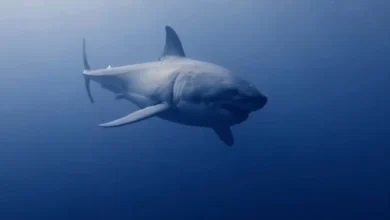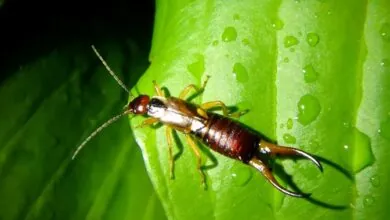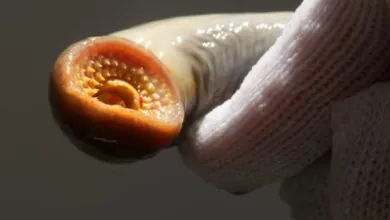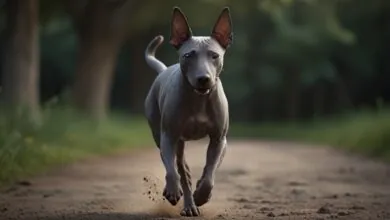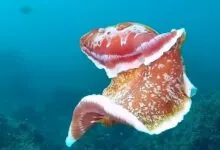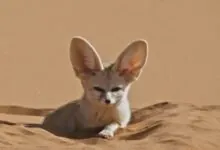Babirusa: Swine with Curved Tusks and Ancient Roots
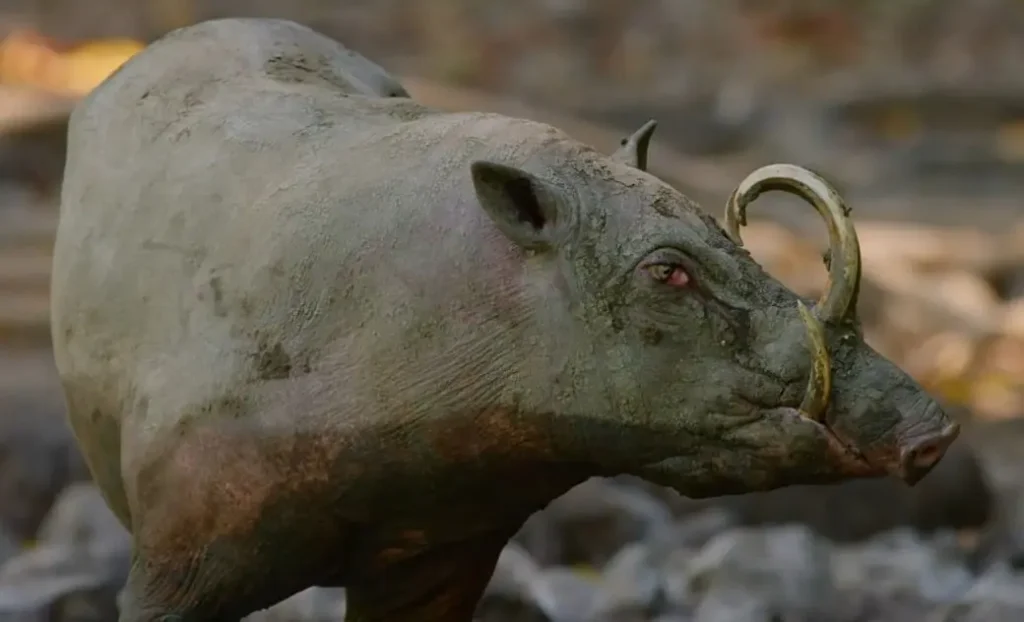
Babirusas – scientifically named as Babyrousa spp. – are renowned for their teeth that are curving tusks providing them an ancient appearance in juxtaposition to the contemporary animals. As these species’ tusks are identical to a deer’s antlers and their overall appearance resembles to large pigs, they are labelled as deer-pigs. The diet of Babirusa encompasses fruits, plants, carrion, insects and berries. You can encounter them, if you happen to visit Sula, Buru, Sulawesi Togian islands in Indonesia.
| Kingdom | Phylum | Class | Order | Family | Genus | Scientific Name | Species |
| Animalia | Chordata | Mammalia | Artiodactyla | Suidae | Babyrousa | Babyrousa spp. | 4 |
Types of Babirusa
With respect to the types of babirusa, there are four universally recognized species; the characteristics that create distinction among them include their teeth, skull, size of body and the amount of hair on their body and tail tuft. Let’s shed some light on these species in a consecutive fashion.
Buru Babirusa
This species scientifically named as Babyrousa babyrussa are known as hairy or golden babirusa as well. The most distinctive characteristics of this species encompass a prominent tail tuft and the golden-brown fur that are actually thick and long. Taliabu, Mangole and Indonesian islands of Buru are its territories.
North Sulawesi Babirusa
This species scientifically named as Babyrousa celebensis is almost certainly the most conspicuous of the babirusas and typically referred to as Sulawesi babirusa thanks to its habitat in the Sulawesi Island and the adjacent islands including Muna, Buton and Lembeh.
Contrasting with the Buru babirusa, this species neither has hair on its body nor tail tuft but it does have gray skin. Comparing it with the Togian babirusas, it is smaller than that; it measures approx. 85-110 cm (2.7-3.6 ft) in length and about 100 kg in weight.
Togian Babirusa
Scientifically labelled as Babyrousa togeanensis, this species in contrast with North Sulawesi Babirusa has thinner and shorter upper teeth. The tusks of this species always come together and they possess somewhat larger tail tuft.
Origin and Evolution
Since 1854, scientists have been mesmerized by the evolution and other babirusa’s historical aspects; during the very year, a naturalist and explorer named Alfred Russel Wallace started the documentation of the area in Southeast Asia that was, as a matter of fact, named after him and depicted this pig-like animal.
Before the taxonomic division of 2002, rooted on the fossil evidence, there were presumed to be two extinct subspecies. Once subspecies, B. babyrussa beruensis which belonged to southwestern Sulawesi and was larger than the modern babirusas, was traced back to the Pleistocene epoch of 2.58 million years ago to 11,700 years ago.
On the part of the other subspecies named B. babyrussa bolabatuensis belonging to south-eastern region of Sulawesi, the presence of this species was recorded in the Holocene period – 11,700 year at the current juncture.
Distribution
Babirusas are local to Sulawesi, the Sula Islands, Buru and some of the Togian Islands. They cover a spectrum of northern peninsula to the southeast provinces in Sulawesi. They can’t be located on the large islands between Sulawesi and Sula notwithstanding their presence on both.
Geography
| Continent(s) | Island of Sulawesi |
| Subcontinents | Island of Sulawesi |
| Countries | Indonesia |
| Bio-geographical Realms | Indomalayan |
| Biome | Tropical Rainforest |
| Climate Zones | Tropical |
Population
The population of Sulawesi, in concurrence with International Union for Conservation of Nature (IUCN) Redlist, is 9,999 mature individuals. As their populating is dwindling in number with the passage of time, they have been tabulated as a vulnerable species in the contemporary period.
Ecological Niche
Babirusas found in rainforests and swamps of Sulawesi is a distinctive pig-like species. Occupying an ecological niche as herbivorous foragers, they have adapted to their environment. Assisting in the regeneration of plant species, they are playing a pronounced role in seed dispersal. It is their feeding and defecation patterns that conduce to nutrient cycling.
Habitat
Babirusas, a distinctive mammal lived in Indonesian islands, as a case in point, Sulawesi, Togian, Sula, and Buru, inhabit distinct habitats encompassing tropical rainforests, both primary and secondary. They prioritize the areas to live in build upon some vital factors including ample water sources like rivers and swamps, condensed vegetation and altitudes covering a spectrum of sea level to 2,000 meters.
They depend upon water sources for mud wallowing and drinking. Their habitat inclinations mirror in their territorial behavior, home spanning and adaptation to various forest sorts.
Appearance
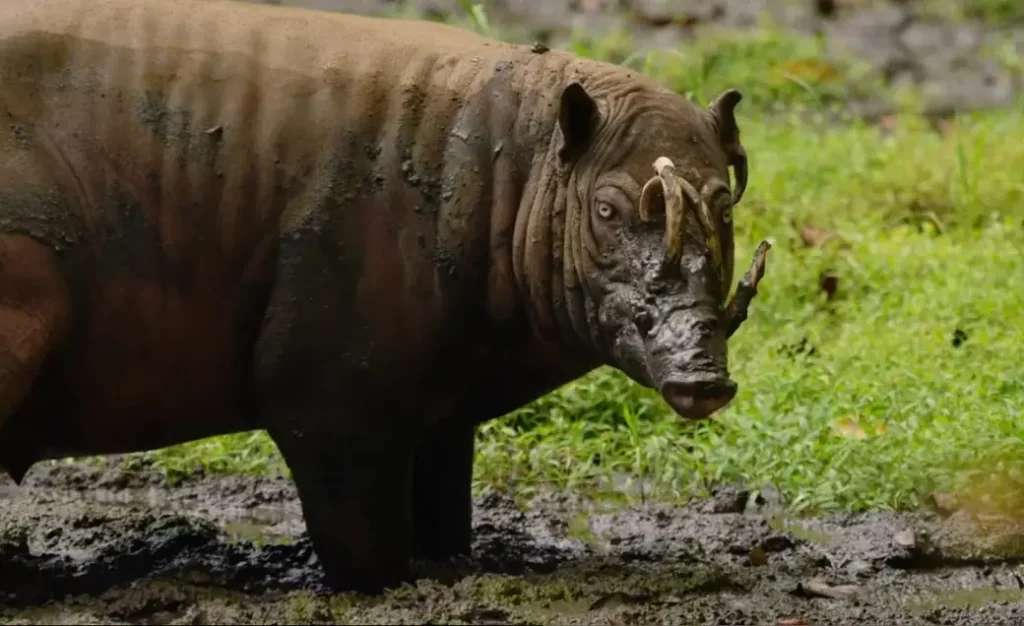
Babirusas – scientifically referred as Babyrousa spp. – possess fascinating adaptations and physical characteristics. Let’s dive into the distinct apparent attributes that set them apart from other mammals.
Facial Structure
Babirusas’ facial structure is characterized by a narrow, long snout and a somewhat large head. Their eyes being small delivers them with a wider field of vision. Their ears that are comparatively large and rounded enable them to pinpoint sounds in their dense forest habitats.
Body Size and Proportions
This species are medium-sized mammals, with males being larger in contrast with females. In the ordinary course, males, measuring 100-120 cm (39-47 inches) in length, stand about 80-100 cm (31-39 inches) tall at the shoulder. Contrary to that, females reaching the height of 60-80 cm (24-31 inches) and length of 80-90 cm (31-35 inches) are insubstantially smaller.
Coat and Skin
The babirusas’ coat, built upon the species and individual, comprises short, coarse hair ranging in color from reddish-brown to grayish-black. Their wrinkled skin is highlighted through the sparse hair on their bodies. The skin, providing shield against the impenetrable vegetation in their surroundings and potential encounters with predators, appears leathery and rough.
Tusked Males
The most striking attribute that makes babirusas conspicuous is the tusks that grow from the upper jaw of males. These tusks earsplitting through the skin of the snout and curving towards the forehead, can extend upwards and curve backwards. We can’t be sure of the precise use of these tusks but it’s feasible that they use it for their defense and dominance displays during the mating rituals.
The aardvark‘s adept use of its elongated snout for insect foraging and the babirusa’s distinctive tusks, serving both practical and ornamental purposes, exemplify unique facial adaptations in the animal kingdom.
Anatomy
Babirusas have dedicated adaptations for its herbivorous diet and survival in its natural surroundings. Let’s spotlight a brief rundown of babirusa’s anatomy.
| Tongue | Muscular and flexible for manipulating and consuming plant matter |
| Claws | Sharp and curved which aid in defense |
| Mouth | Wide with strong lips for grasping and tearing vegetation |
| Jaw | Powerful and robust with strong muscles for exerting force |
| Teeth | Large incisors, premolars, and molars |
| Nose | Well-developed for detecting scents |
| Feet | Sturdy with specialized hooves |
| Skeleton | A structure that provides protection for vital organs |
Reproduction and Life Cycles
When it comes to the reproduction and life cycles, babirusas exhibits an enthralling and distinct feature, that is, the males have to fight with other ones for a female during the breeding season. Let’s break it down and examine each aspect in detail..
Sexual Dimorphism
The significant babirusa’s sexual dimorphism is among the most noteworthy standpoints of this species. The male babirusas possess elongated canine teeth – tusks – that curve backward towards their forehead. The females do have these tusks but smaller and less pronounced. During mating, this sexual dimorphism is widely regarded as having much importance in male-male fight.
Mating Behavior
Babirusas fall into the polygynous category allowing a male to mate with multiple females. On the arrival of the breeding season that occurs between January and August, the male babirusas engage in a competition to have access to females to mate. To establish supremacy and gain mating prospects, they use their tusks to fight.
Gestation and Birth
When it comes to gestation, babirusas need 150 to 157 days for this process. Female babirusas by and large give birth to a single offspring, albeit the occurrence of twins possible few and far between. The newborn piglet weighing from 10 to 15 pounds, in contrast with other species of pigs, is fairly large and muscular; on their bodies, they have stripes or spots that fade into oblivion as they grow.
Sexual Maturity
Based on babirusas’ gender, they sexually mature at different ages. Females, as is customary, become sexually mature between 1.5 to 2 years of age; contrary to that, it takes longer time span for males to reach maturity around 3 to 4 years. Scientists are of the view that the extensive growth and development including the elongation of males’ distinctive tusks are responsible for the delay in their sexual maturity.
Lifespan
The babirusa’s lifespan in captivity is believed to be up to 24 years or more. Constituents such as habitat availability, predation and any disease cast a shadow over their lifespan in natural habitat.
Mating Habits
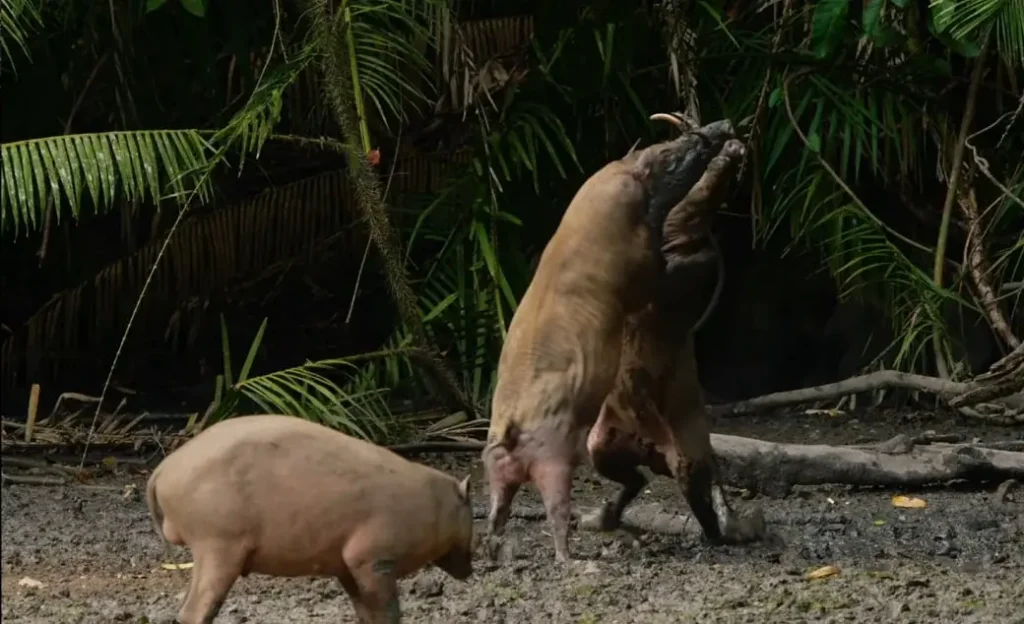
When it comes to the mating habits of babirusa, the intense mating battles are what they have to go through. Females opt for and mate with the male that beat all the other males. Let’s delve into the most conspicuous key points pertaining to their mating behavior.
| Mating Behavior | Male babirusas fight fiercely for mating rights using their tusks |
| Reproduction Season | Babirusas breed between January and August |
| Gestation Period | 150 to 157 days |
| Baby Carrying | Female babirusas provide maternal care to their piglets |
| Independent Age | Six to eight months of age |
| Baby Name | Piglet |
Lifestyle
Babirusas, one-of-a-kind pig-like species native to the Indonesian rainforests, possess an enthralling lifestyle. Let’s spotlight the lifestyle of babirusas considering the most stimulating aspects.
Solitary or Small Groups
These are characteristically solitary animals, albeit they may once in a blue moon create small groups comprising a mother and her piglets. The adult males are considered to be more solitary; females, on the flip side, may endure overlapping home ranges.
Nocturnal Behavior
As these pig-like animals fall in nocturnal category, they’re commonly on the go during the night; this very features of them saves them from uncomplimentary daytime temperatures and predators. Resting and seeking shelter in thick vegetation, they spend their days.
Adaptations for Forest Life
Possessing more than a few adaptations assists the babirusas to thrive in their forest habitat. Their sharp hooves and elongated legs are what empower them to move on jagged terrain and climb trees.
Communication and Senses
Babirusas’ vocalizations such as grunts and squeals enable them to have communication. To communicate reproductive status and establish territories, they also use scent marking. They locate food and detect predators using their remarkable sense of smell.
Prey and Diet
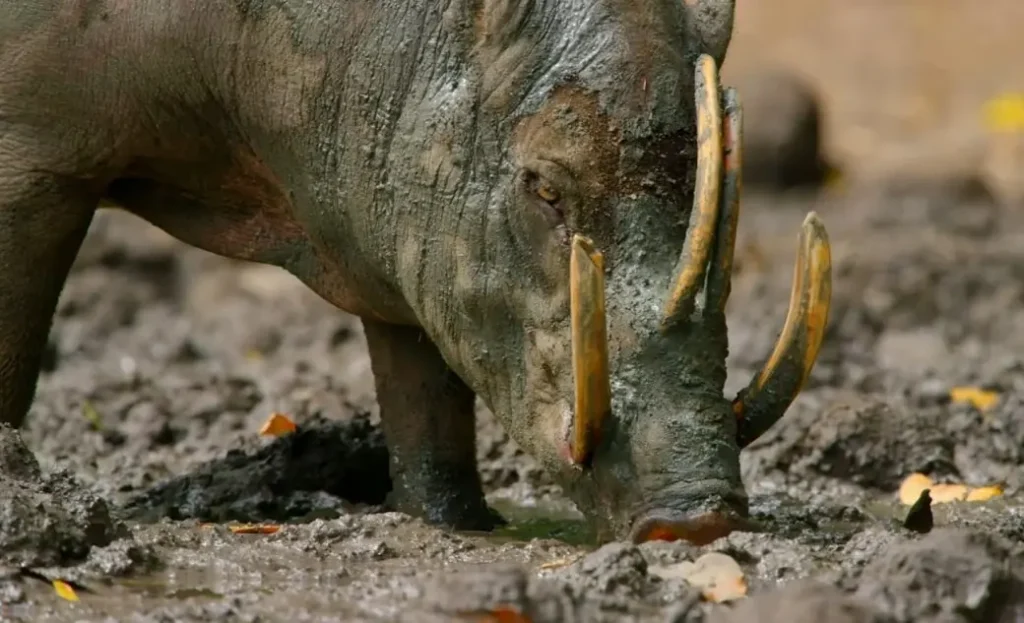
Babirusas are omnivores – their diet is composed of both plants and animals. In their search of insects or larvae, they take edge of their hooves in many instances to dig in the ground. To approach lower branches of a tree and eat leaves, they use their back hooves that support their body. The diet of babirusa comprises fallen fruits, nuts, berries, plants, roots, leaves, insects, tree bark and every now and then carrion found on the forest ground.
Predators, Threats and Conservation
As per IUCN, the babirusa’s conservation status is “Vulnerable.” This unique wild pig species encounters a number of predators and threat in their surroundings. Let’s mark some of the most prominent aspects of babirusa’s predators, threats and conservation.
Predators
Babirusas’ predators, in addition to humans who hunt them for their food, includes tigers, feral dogs, leopards and crocodiles. Targeting them to eat, these predators constitute a menace to both adult babirusas and their piglets.
Habitat Loss
Owing to human encroachment and deforestation, habitat loss has become a major threat to these species. Agriculture, logging, and infrastructure development has put an end to their rainforest habitat, resulting in the non-attainability of resources and reduction in their population.
Conservation Status
The babirusa’s conservation status is a matter of great concern thanks to its inclusion in the IUCN list as vulnerable. To secure their populations and habitats, conservations efforts are being made; these include establishing protected areas, implementing anti-poaching measures and promoting sustainable land use practices.
Relationship with Humans
In Indonesian communities, babirusas hold cultural importance; acts like hunting and illegal poaching have made the relationship between babirusas and humans a maze of complexity. To ensure these animals’ coexistence and enduring survival, conservation efforts and research are playing their fruitful role. To give a rise to a friendly association between babirusas and humans, these species are every once in a while, featured in folklore and ceremonies.
The Rundown and Fun Facts
| Common Name | Babirusa |
| Other Name(s) | Pig-deer, Deer-pig |
| Number of Species | 4 |
| Population Size | Vulnerable |
| Lifespan | 10-15 years (wild); up to 24+ years (captivity) |
| Weight | 60-100 kg (adults) |
| Length | 75-100 cm |
| Top Speed | 30 miles per hour |
| Predator | Large carnivores (tigers, leopards, crocodiles) |
| Prey | Fallen fruits, roots, tubers, nuts, invertebrates |
| Most Distinctive Feature | Elongated, curved tusks in males |
| Communication | By grunting, growling, and chattering their teeth |
| History | 35,400 years old paintings found on the island of Sulawesi |
